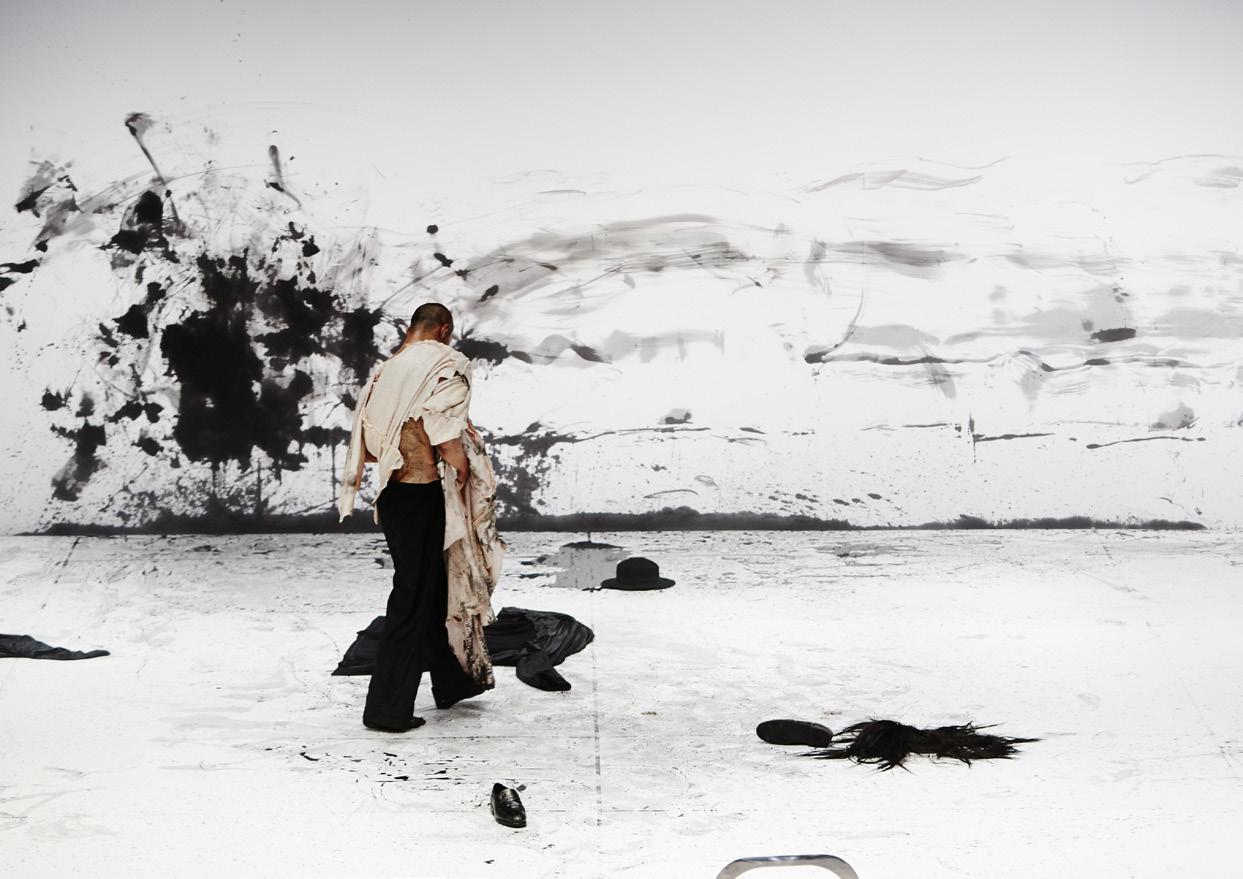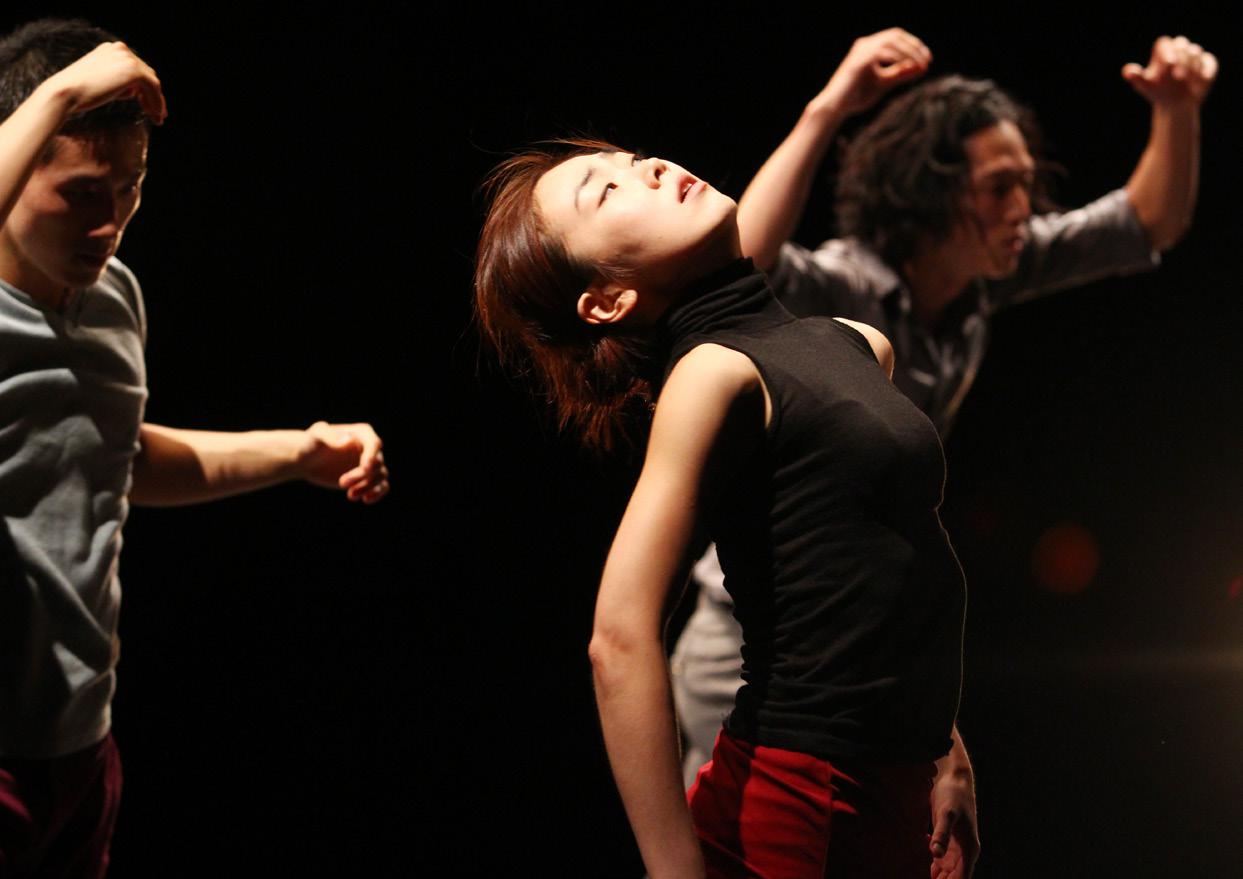Performance Info
Koo Ja-ha is a theater maker and electronic music composer who produces contemporary independent theater and performances. He works with various media, such as music, video, text, and installation, and produces political theater and documentary theater on topics in politics, history, and social issues. Koo’s works mainly come out of Brussels, Belgium, and Amsterdam, the Netherlands, and he is currently a resident artist at Art Center Campo (CAMPO) located in Ghent, Belgium. His long-term project Hamartia Trilogy consists of Lolling and Rolling, Cuckoo, and The History of Korean Western Theatre. Lolling and Rolling premiered at Theater Spektakel in Zurich, Switzerland, in 2015, and Cuckoo premiered at the Steirischer Herbst Festival in Gratz, Austria. The History of Korean Western Theatre is set to debut in the spring of 2020.
Q. You have called yourself a director, writer, and “theater maker” instead of a performer. What is your process for making theater/performances?
A. I usually introduce myself as a theater maker. Theater maker implies various roles: at the base level, from director to concept design to writing, etc.—an independent artist that fulfills a combination of roles. From the time I was in Korea I worked on plays or performances as an independent project and not as a team project. For example, I would pick the topic, do the research, decide on a concept, make music and videos, and, depending on the project, would write the text. These days, I even go on stage. When you work alone on a project you find your goal is not putting together the performance; rather you want to deliver something, and your goal becomes coming up with a concept and what language to use to deliver that concept to the audience. That language could be music or it could be a video project. As a theater maker who makes contemporary theater, I can definitely arrive at a format that’s different from a performance. There are people who say that my work is a lecture performance, or a theater performance, or a multimedia performance. There are even people who call it a concert. They’re not wrong. However, I think my work is not so much a lecture performance, but closer to a theater performance or documentary theater that has the function of a lecture. I think about how to deliver information, knowledge, research material, and beliefs as an artist, and how to make a project in a particular format and language that goes beyond the typical 15- to 20-year-old lecture performance style so that I can communicate with the audience. Cuckoo and Lolling and Rolling can be seen as conceptual products. For The History of Korean Western Theatre, which I’m currently researching, I don’t have ideas on how to stage it yet. I’m at the thinking stage. In my case, I research for six months, and I need time to work on the music and
video based on my research. To finalize the work, it will take roughly one and a half years.
Q. In Cuckoo, you talk about how one day when you are exhausted, the electric rice cooker Cuckoo talks to you by saying, “The rice is ready.”It was just you and the rice cooker on stage, but I remember it being a warm moment. How did you come to make Cuckoo?
A. As you know, Cuckoo is about the Financial Crisis of East Asia (known as“IMF” in Korea) in 1997. As I looked into the causes of the Financial Crisis of East Asia, it made me think about the “pressure society” created by the neoliberals. This is told in my work, but I lost many friends over the last fifteen years to suicide. Every case is different, but what the people who knew them all said in common was the word “pressure.” Pressure having do with society or finances. One day, I was making rice and began thinking about a friend who had committed suicide due to financial problems, and I became really depressed. Just then my Cuckoo rice cooker said, “The rice is ready. Be sure to turn the rice over,” and ironically it was comforting. I was alone in that space but I felt like I wasn’t alone. That’s when I decided to make Cuckoo. After that, I hired a hardware hacker. I wanted to hack into the rice cookers to make them into performers. I thought about doing a technological experiment, making the rice cooker into an AI robot, but it felt very removed from the topic I wanted to deal with. The topics I was interested in at the time were ideas like “posthumanism” or “homo sacer” and I was researching about people who were excluded from society. In order to arrive where I wanted within the one-hour performance time, I decided to exclude the technological experiment and make the rice cookers into telerobots. After that, I focused more on the content. I thought hard about questions such as “how many Cuckoo rice cookers do I need,” “why do I need to hack into them,” “what conversations will the Cuckoo rice cookers have,” “what will I be doing in these circumstances,” and “why do they have to be pressure rice cookers,” and I established a dramaturgy that explores how to transform the concept, topic, metaphor, and lecture. Cuckoo premiered at the Steirischer Herbst Festival in Gratz, Austria, in October 2017. It has been performed over 40 times in twelve countries, translated in over eight languages, and it is scheduled to be performed in North America, Asia, and Oceania in 2019.
Q. You have referred to Lolling and Rolling, Cuckoo, and, currently in preparation, The History of Korean Western Theatre, as a trilogy. You attached the word “Hamartia,” which in Greek means “sin,” to the title—Hamartia Trilogy. Could you tell us more about that?
A. “Hamartia” is a term from ancient Greek tragedies, referring to the main character’s “tragic fault.” The basic concept of Hamartia Trilogy is to look at a specific problem affecting our lives in the modern environment and try to find out what the root of the problem is and what the tragic source of the problem is by going back in history. It’s a project that makes you think about the political situation and societal characteristics that exist at the root. It somehow expanded naturally from my own personal microscopic phase to a macroscopic phase. I decided to make Hamartia Trilogy in 2014. I’ve finished the first project, Lolling and Rolling, and the second project, Cuckoo, and have started on the third project, The History of Korean Western Theatre. Lolling and Rolling is a short work—forty minutes—about English education in Korea. It’s a project that first started with a simple question. For instance, why is it that after Korean people study English for so many years, they don’t improve? What is the fundamental problem with English education? How did this problem start? That started my research, which took me up to the Japanese colonization period in history, and of course to cultural colonization
and the problem with political ideology. At the same time, I also had to deal with ultranationalism. It is also a story about how much English skills dominate our lives, and also about social pressure and the supremacy of academic cliquism. In the performance, I practice “listening comprehension” with eejay equipment called CDJ. I focused on the fact that the story I wrote in English would be difficult to understand if a native English speaker read it. Lolling and Rolling premiered at a festival called the Theater Spektakel in Zurich, Switzerland, in 2015, and I was touring mainly in Europe but temporarily
stopped the tour in November 2018. Significant time had passed since the first performance, and there were changes in my perspective, so I felt that there was a need for an update. After I complete The history of Korean Western Theatre in 2020, I plan on updating Lolling and Rolling and resume touring.
The History of Korean Western Theatre is the final work in Hamartia Trilogy. I’m currently in the research phase, and I plan on taking it into production in 2019 and having it premiere in spring 2020. In this work, I plan on talking about Confucian modernity and the Korean education system. This work also started with a personal story. By chance, I attended the 100-year anniversary of Korean theater in Seoul in 2008. What is important here is that it was not the 100-year anniversary of Korean Western theater, but the 100-year anniversary of Korean theater. I thought what other group or country could count the age of their theater history? I also wondered why Korea didn’t have a contemporary play or theater. I thought about this as I looked at the theater world, which lagged behind, having progressed at a snail’s pace with a history of merely 100 years. I formulated the work as I watched the people of the theater world stuck in a system of authoritative apprenticeship. Because I’m in the research phase I don’t have an idea about how to stage it yet. I’m currently doing research and making music and video for it at the Art Center Campo (CAMPO) in Belgium, where I’m doing my residency. Once I finish The History of Korean Western Theatre, I will update Lolling and Rolling, as I mentioned earlier, and I also plan on holding an exhibition with the title Hamartia Trilogy.
Q. There seems to be a theme that runs through the three works in Hamartia Trilogy. I think it’s “social pressure” you wrote about in Cuckoo. It’s not limited to Korean society, but closely connected to the situation in Asia. There is a question of what external power causes this social phenomenon or history.
A. The reason for telling a Korean story is to show a specific case. It’s not simply because that’s where I was born and raised. People can learn about their own society or nation’s political
situation through the Korean story. In fact, many international audiences recognize Cuckoo as their own story after seeing it or ruminate about the world they live in. For example, when Cuckoo was performed in Athens, Greece, there were people who came to the green room infuriated. By happenstance, the day I performed in Greece was the day that Greece’s repayment program to the IMF ended. The Greek audience was feeling rage at the world economic order that the members of the United Nations, including the United States, had set and the social pressure that the order had produced. Only it wasn’t just Greece.
I was able to feel the anger and concern from people in Spain, the Czech Republic, Austria, etc. When you look at the relationship between the Korean political situation and capitalism, there are stories that applies not only to East Asia as a whole, but that can be expanded to Europe and the Americas. And I’m not just referring to Cuckoo but also Lolling and Rolling as well as The History of Korean Western Theatre. The works in the Hamartia Trilogy are connected like a chain in a series, so it would be good to compare them as you watch.
Q. As you have performed in numerous countries, the type of audience that you come across must vary widely. Do you think a lot about the audience as you’re producing your work?
A. Basically I create my works for an international audience. The Korean audience is definitely included in that. Like the term “glocal,” when you’redealing with global issues but are trying to find local peculiarities, you can’t help but think about the audience. Hamartia Trilogy tries to get at our era’s particular event or phenomenon and tries to find the tragic cause. Even though it’s the same topic, when I think about what audience I’ll be showing my work to, I can focus more on the topic’s fundamental core. In some sense, it’s a very difficult task as well. For instance, when I talk about the soaring suicide rate in Korea after the Asian Financial Crisis in 1997, it’s important to think about how to approach this story to the Korean audience, who already knows about it, versus the international audience, to whom this is all new. To the international audience you have to provide them with enough information so that they can understand the story, whereas with the Korean audience, you shouldn’t
provide them with too much information. Otherwise, to the Korean audience it becomes like a class lecture. It’s ultimately an issue of dramaturgy, how much information to provide, and how to balance that information. When you think about how to structure the project, or how much distance to put between
yourself and the project, you can’t help but think deeply about the audience. There’s always something else I keep in mind when I’m working on a project. I ask myself if I can deliver what I am trying to say within the limited time of sixty minutes, and if I can vouch for the rest of the evening with the performance. The project isn’t finished after showing it, because it offers time and a chance to think about the specific topic.
Q. This is a difficult question, but what thoughts do you have about theater as you work on your projects?
A. My work can be released as an exhibition, as music, or as a performance. It’s not so much that the work’s format or the genre determines what it is, but the focus of the project is more important. As an artist who uses synesthetic media and language to do live art, how I can best show my work is through performance art. Even though the performance language I use is music and video, what is at the base is in the category of theater, and within theater, it’s contemporary theater. And not through a traditional method but a nontraditional method, I bear in mind an unanticipated or unimaginable expandability as I work.
Photograph Copyright :
1. (Main image) : Lolling and Rolling ⒸThomas Lenden
2. Cuckoo ⒸRadovan Dranga
3. Lolling and Rolling ⒸThomas Lenden
Production Details
- Director








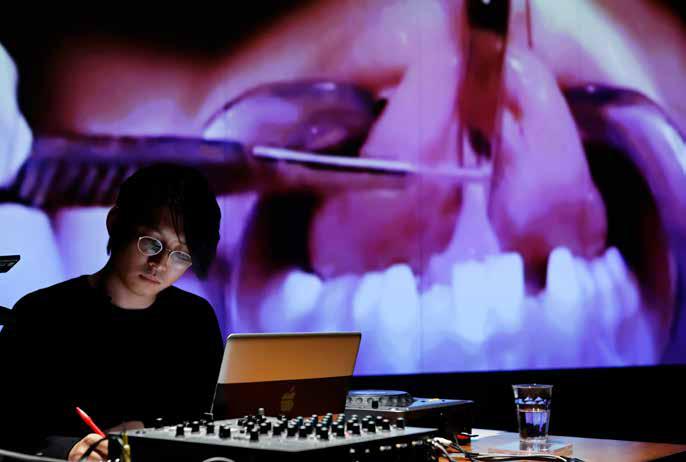
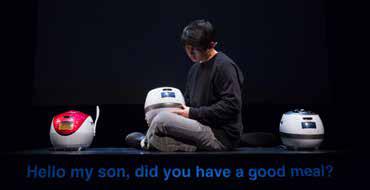
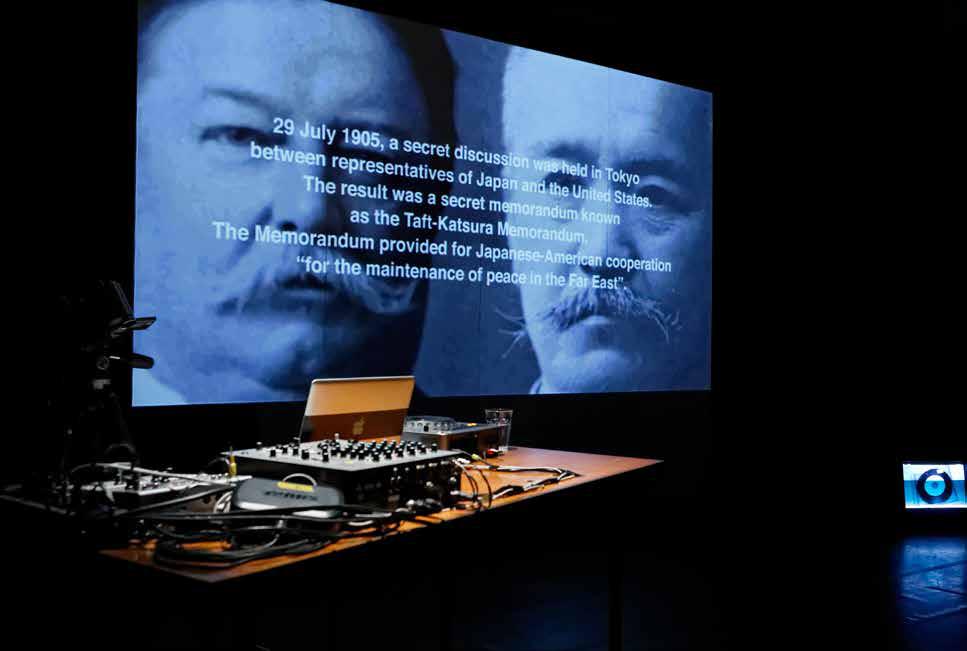

 PREV
PREV
.jpeg)
.jpg)
_(c)포스(FORCE).jpg)
_(c)장석현_코끼리들이 웃는다(SUKHYUN JANG_ELEPHANTS LAUGH).jpg)
.jpg)
.jpg)
_(c)한받(Hahn Vad).jpg)
_(c)비주얼씨어터 꽃(CCOT)(1).jpg)
_(c)봉앤줄 (BONGnJOULE)(1).jpg)
_(c)대한민국연극제 2019 (Korea Theater Festival 2019)(0).jpg)
_(c)몸꼴(Momggol)(1).jpg)
2018MODAFE_Taemin Cho (2).jpg)
